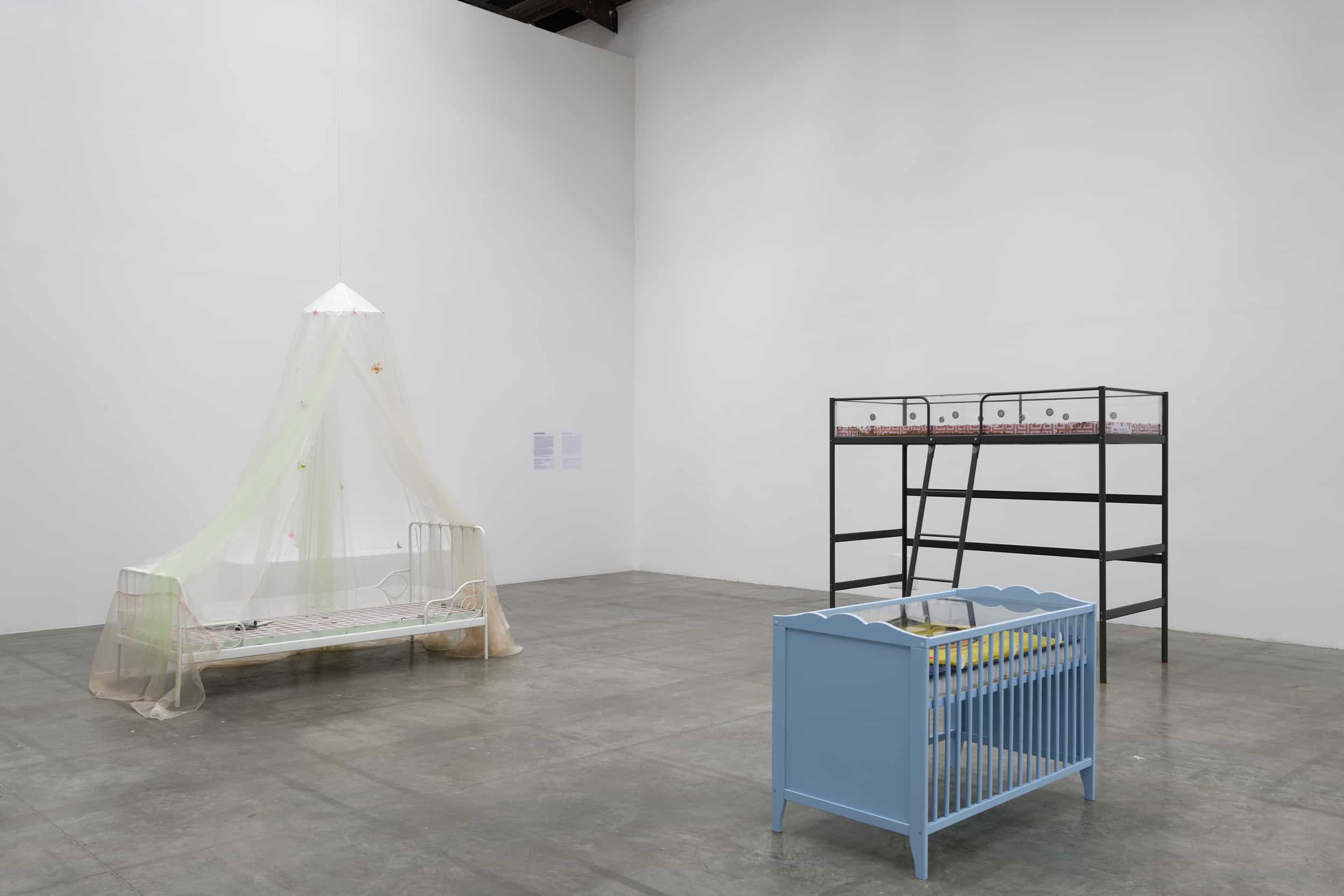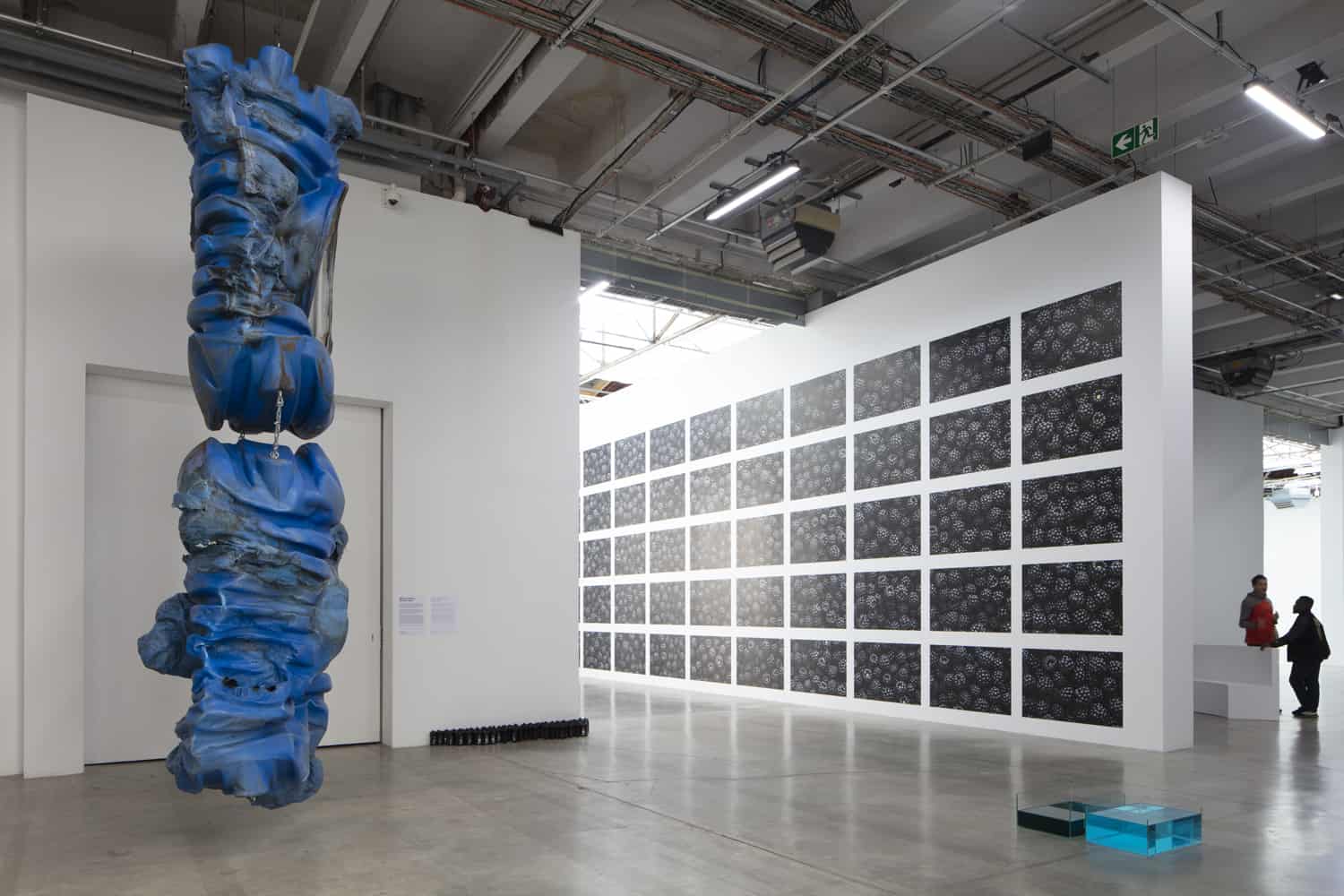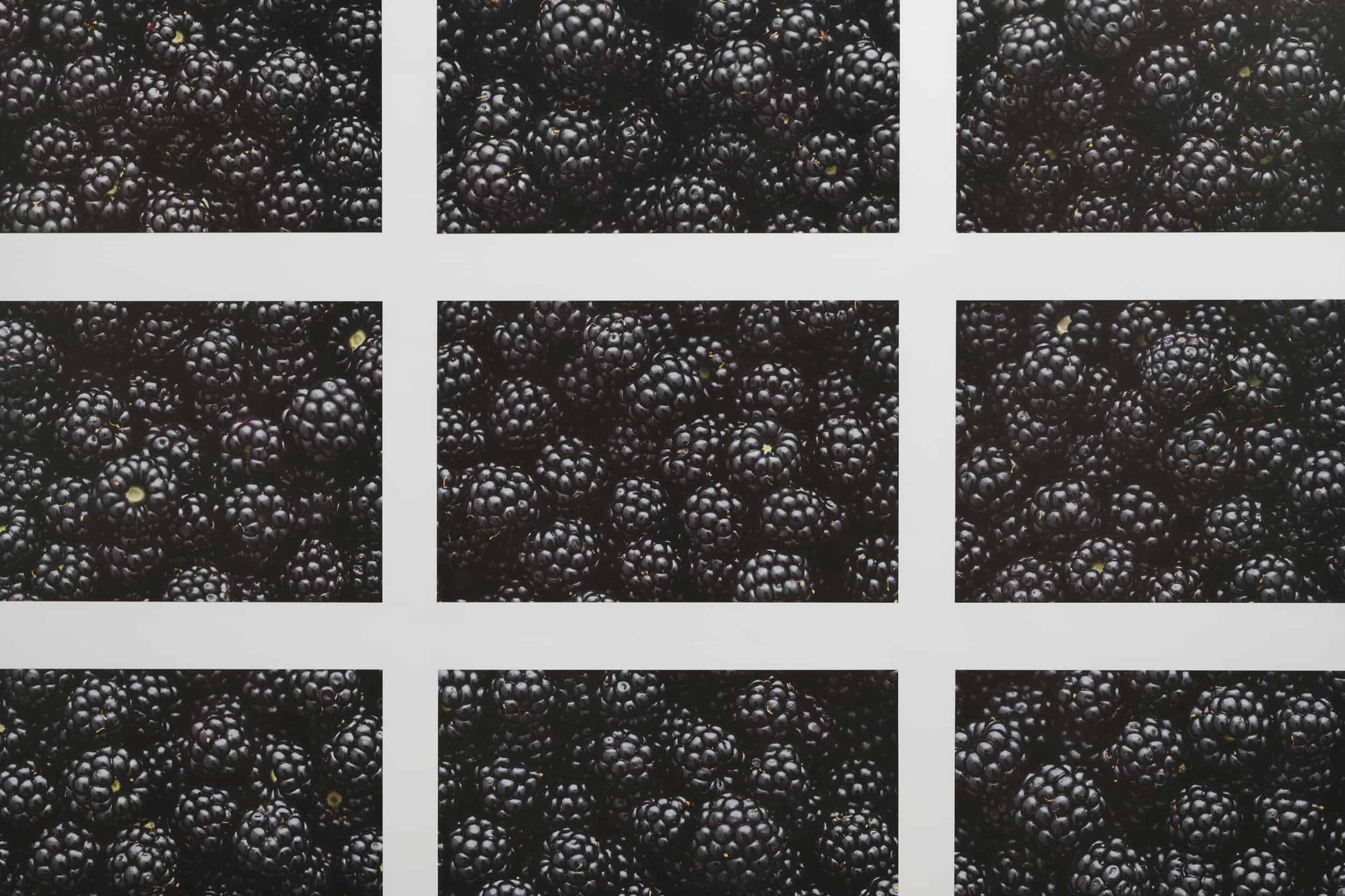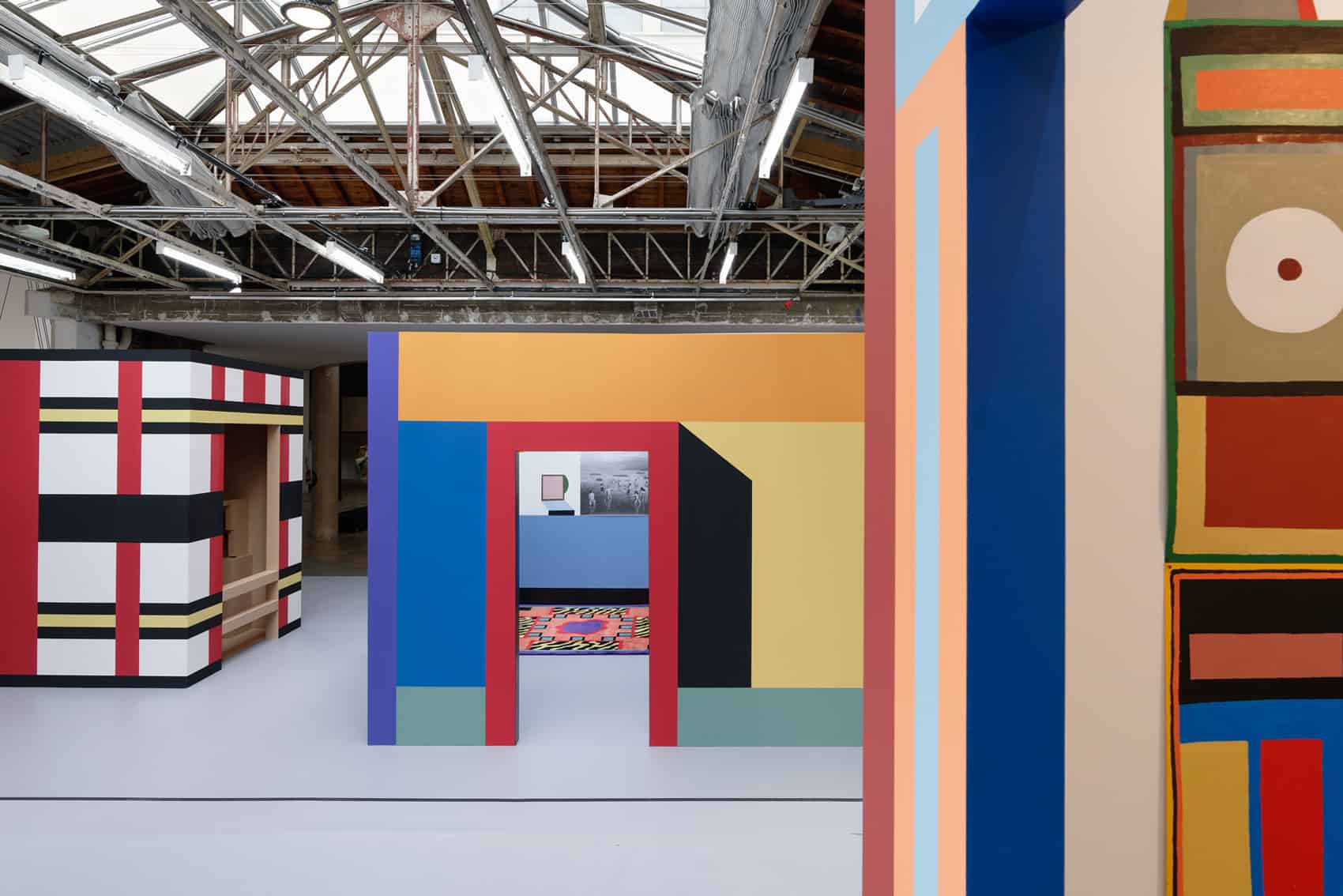Palais de Tokyo is the largest contemporary art gallery in France and its avowed dedication to emerging artists has been substantially visible for 17 years of its existence. It has no permanent collection and boldly call itself an anti-museum, for its every exhibition is each time produced anew as a result of a thorough research within the contemporary art scene. This time, Palais de Tokyo attempted to sketch a portrait of the decade that is coming to closure: ‘Future, Former, Fugitive’ is simultaneously a survey of the artistic trends that dominated the French art scene, and a psychological portrait of the decade, embodying its fears, ambitions and obsessions. This comes 9 years after another exhibition, Dynasty, which gave a similar panorama of the Francophone artistic creation, a joint effort of Palais de Tokyo and Arc-Musée of Paris. Yet, this time the sketch of the scene is much lore subjective and elusive, without ‘dynasties’ to give it scaffolding. Nothing here is definitive because, as the curators state themselves, there has never been a single French art scene, but rather a multiplicity of communities, events and singularities.

Jonas Delaborde & Hendrik Hegray, NK 12 EGIPAN, 2019, Metal troughs, metal shelves, PVC tarpaulin, wallpaper, linoleum, paper, fluorescent tubes, modeling clay, paint, enclosure, publication, printer, sound, Courtesy of the artists & Galerie Valeria Cetraro (Hendrik Hegray), Photo credit: Aurélien Mole
The sheer size of the show is overwhelming, as it is the case with most of the exhibitions held by Palais de Tokyo. While it by no means provides a compendium of what has happened in French arts between 2010 and 2019, the exhibition manages to present a diversified overview, avoiding ageist, ableist, gender, ethnic and racial biases. Obviously, we always wish for a better representation in national institutions, but cannot be denied that the perspective offered in ‘Future, Former, Fugitive’ is satisfyingly open and inclusive. The artworks are grouped in 5 thematic sections, some defined by formal affinities (or contrastes) and some linked together by subject matter. This mosaic of stories, techniques, sounds and colours is in fact dazzling and it gives a very literal form to the idea that the French scene(s) is ultimately a fleeting object, always in the process of becoming.

Aude Pariset, from left to right : Promession®: Rêve de Chrysalide, Puberté Florissante (2018), Promession®: Schwammbett, Stadium des Krabbelns (2018), Young Adult Maze, Deciphering Level (2018), Exhibition view “Future, Former, Fugitive”, Palais de Tokyo (10.16.19 – 01.05.20), Courtesy of the artist & Sandy Brown (Berlin), Photo credit: Aurélien Mole
There is a detectable sense of melancholy hovering above the exhibition, visible both in many works and in the display itself – the notions of loss, passage of time and lost futures are widespread topoi in the show. The enthralling piece by Aude Pariset embodies this atmosphere – Rêve de Chrysalide, Puberté Florissante consists of 3 different children beds, each for a different age group, sprinkled with living woodworms, which devour the furnitures under the curious eye of the audience. Each bed is accompanied by a set of images (digital and analogue), thus linking the process of gradual disappearance to the lifecycle of visual content. This elegiac piece, a modern take on the motif of vanitas, is deeply affective – arousing nearly visceral anxiety in the viewer, it gives shapes to fears of death, absence and bereavement. It actively mourns someone absent, who cannot be identified – it can be a person, a whole culture, or environment, since many of the images depict animals. The piece provides a paradoxical consolation by weaving the current highly pictorial culture into something bigger, and possibly, more meaningful: biosphere, ecosystem and the incessant cycle of matter in environment. Pariset’s work also imprints the notion of temporality on the seemingly atemporal idea of image.

Anita Molinero, La Grosse Bleue (troisième version) (2017) © Adagp, Paris, 2019, Courtesy of the artist & Galerie Thomas Bernard / Cortex Athletico (Paris), In the background: Jean-Charles de Quillacq, Shower gels washer fluids (2019). Courtesy of the artist & Marcelle Alix (Paris). Pierre Joseph, Mur de mûres, série Photographie sans fin (2019). Courtesy of the artist & Galerie Air de Paris (Paris) © Adagp, Paris, 2019, Exhibition view “Future, Former, Fugitive”, Palais de Tokyo (10.16.19 – 01.05.20), Photo credit: Thomas Lannes
Time in its manifold manifestations underpins the vibrant, versatile display. Preoccupations over actuality, virtuality, past and future are a hidden link between the disparate works, which otherwise are akin only in geographic terms of contemporarity with each other. The introductory segment of the exhibition grapples with the impossible task of describing the ‘here and now’. Works such as Photographies sans fin by Pierre Joseph or sculptures by Anita Molinero typify the contemporary logic of mass production, which floods the planet with multiple seemingly identical products (Joseph makes his point by photographic perfectly fractal blackberries, once a wild forest fruit) and interpenetration of the organic and industrial materials. Grégoire Beil’s video work Roman National brings together the swarm of adolescent voices, flowing from digital platforms such as Periscope (streaming application), thus incarnating current social anxieties in the form of a polyphonic, sometimes cacophonous, hymn. Elsewhere, we can experience parallel temporalities, as in the entire section of ‘The Storytellers’, where time is a function of the irrational, sensuous and sentimental. The concluding chapter of the show gathers works which reimagine the art historical canon, adapting it to the demands of the present age, thus revealing the intricate connections between the past and now.

Pierre Joseph, Mur de mûres, série Photographies sans fin (2019), Exhibition view “Future, Former, Fugitive”, Palais de Tokyo (10.16.19 – 01.05.20), Courtesy of the artist & Galerie Air de Paris (Paris), Photo credit: Aurélien Mole, © Adagp, Paris, 2019
The ‘future’ in the exhibition’s title does not operate as a prognosis, rather as an omen, a hunch that builds upon current angsts. Many of the works on display articulate climate anxiety, already mourning the loss of the future – at least for the life as we know it. The textile work by Adrien Vescovi, Land I, II, III, poses questions about Anthropocene and the heritage we will pass down to next generations. The artist drapes his colorful tapestries as a monumental curtain that halves the space into the metaphorical now and what is yet to come. Vescovi infuses his textiles with the geological notion of time, dying each section with natural pigments collected from different locations, each standing for a lyrical, geological layer. Yet, even though the artist incorporates earth and time in his artistic production process, his pieces function rather as a tale of Anthropocene, telling the story of the soaring, omnipresent impact of the human civilization onto the planet. Similar concerns are shared by Agata’s Ingarden work A picnic at Sunset, whose mere title evokes a sense of finitude. The sculpture is an ever-evolving piece: a pair of sunflower-like metal structures hang down over a vast solar panel, covered in viscous, slowly dripping caramel. The composite, bulky nature of the artwork may intimidate the audience, but the organic, fragrant caramel incites curiosity and draws the viewer into the sculpture. Surely, Picnic is filled with contrasts, creating an uncanny, restless atmosphere of its own. Building on the climate and environmental unease, it employs playfulness and literal sweetness to underscore the recklessness of the capitalist approach to climate safety and eventually, our future.

Adrien Vescovi, Land I, II, III, 2019, Exhibition view “Future, Former, Fugitive”, Palais de Tokyo (16.10.19 – 05.01.20), Courtesy of the artist, Photo credit: Thomas Lannes
‘Futur, Former, Fugitive’ indundates the viewer with stimuli and information, which is understandable, given the fact that it becomes increasingly harder to process all the data that floods us everyday. In this, the exhibition is a token of the society that engendered it. It is a motley of divergent and heterogenous artistic practices, both radiant and blinding, splendid and disorientating, vigorous and elusive, just as the times we live in.

Agata Ingarden, A Picnic at Sunset (2019), Exhibition view “Future, Former, Fugitive”, Palais de Tokyo (10.16.19 – 01.05.20), Courtesy of the artist, Photo credit: Aurélien Mole
“Future, Former, Fugitive. A French scene”
Palais de Tokyo
From 16/10/2019 to 05/01/2020
Carlotta Bailly-Borg, A Liquid Company, 2019, Acrylic paint on glass, six elements, Courtesy of the artist, Photo credit: Aurélien Mole; Adrien Vescovi, Land I, II, III, 2019, Coton, natural pigments, Courtesy of the artist, Photo credit : Aurélien Mole
From the fist to the last plane: Nathalie Du Pasquier, Cabine n°3 : AS THE PLANE WAS REACHING CRUISING ALTITUDE 2, 2019, Installation, five painting, oil on paper, Cabine n°1 : CASA MIA, 1984-2019, Installation, mixed media, paintings, wool carpets, photocopies, Cabine n°2 : TROUVÉ DANS UNE GROTTE, 2019, Painted wood, Courtesy of the artist, Photo credit : Aurélien Mole













